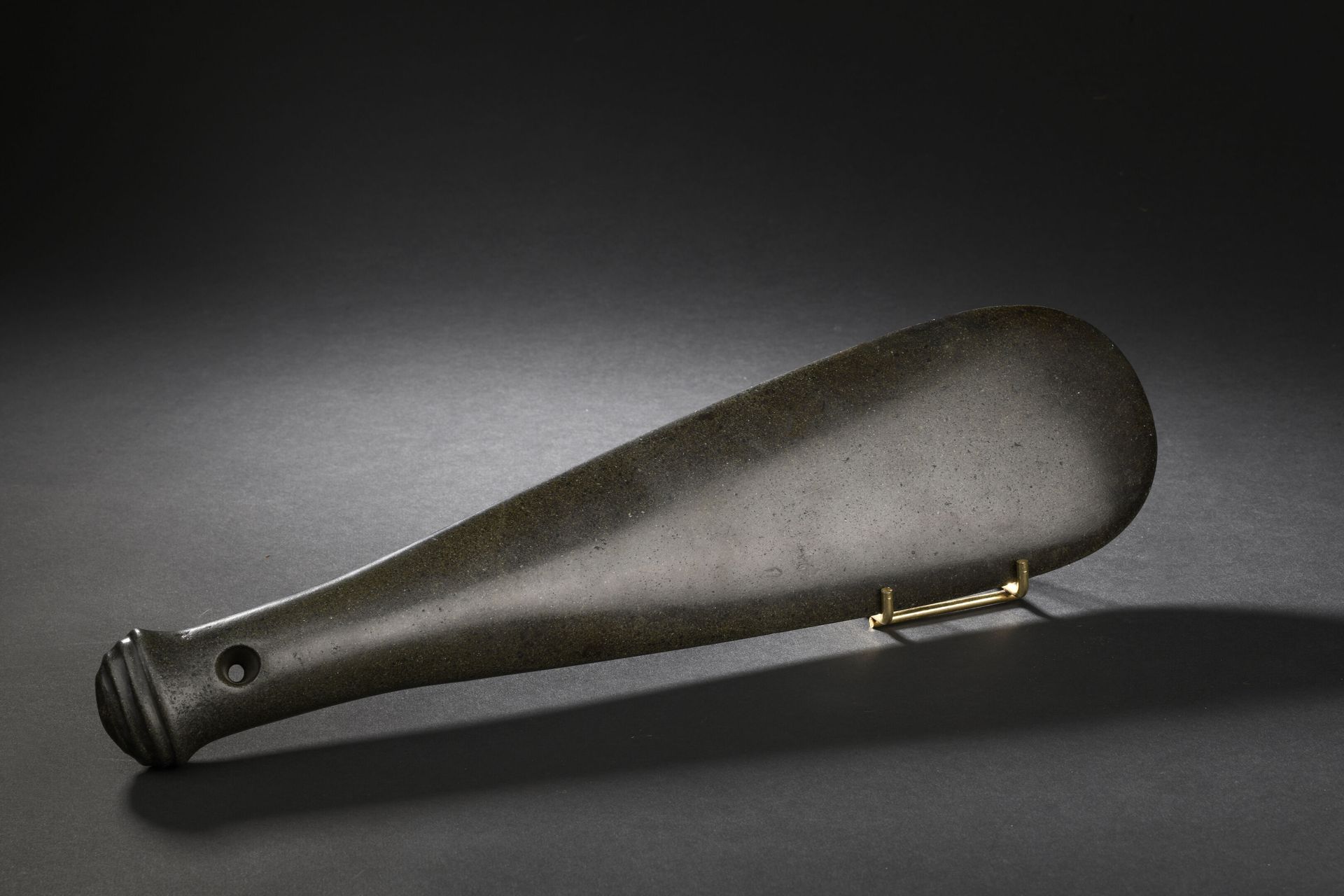Description
*Massue patu onewa, Maori, New Zealand L. 38,5 cm Provenance: Probably The Leverian Museum, London then Sale Collection of the Leverian Museum, London, May 1806 European private collection Bohnmans sale, London, June 23, 1992, lot 229. Robert E. Hales Collection, London Private collection, Switzerland Bibliography : Rossi Milène, "Un bernois nommé Wäber, peintre et dessinateur du troisième voyage du Capitaine Cook", Edition D, 2008, p. 74. Exhibition: Bern, Galerie Duflon & Racz, Un bernois nommé Wäber, peintre et dessinateur du troisième voyage du Capitaine Cook, 3 - 18 octobre 2008. It is difficult to imagine that this object, with its extreme purity, softness and perfect symmetry, was traditionally used in hand-to-hand combat by Maori warriors to break the heads of their opponents. Carved from basalt, the club has a grooved handle with an eyelet that flares out into a spatula. The corpus of these Maori clubs is divided into two categories, this example carved in stone is called patu onewa. A prestige badge, beyond its warlike use, it could be used during Maori speeches and ceremonies during which it was brandished. The particular attachment to these objects and their great value in the eyes of those who held them was pushed to the point of personification, in fact it happened that some patu even had a personal name. Originally, the clubs were attached to the wrist with a cord made of braided kavakeha. The hole was drilled with a tuiri, a quartz point. The making of such a weapon required a long and arduous work of the stone which was the prerogative of the old men. The first step was to split a block of stone. The piece was then roughly cut with a piece of quartz or a kiripaka stone, and then the painstaking polishing stage could begin. This lot is a temporary import and is subject to a 5.5% buyer's fee in addition to the selling expenses and the auction price.
154
*Massue patu onewa, Maori, New Zealand L. 38,5 cm Provenance: Probably The Leverian Museum, London then Sale Collection of the Leverian Museum, London, May 1806 European private collection Bohnmans sale, London, June 23, 1992, lot 229. Robert E. Hales Collection, London Private collection, Switzerland Bibliography : Rossi Milène, "Un bernois nommé Wäber, peintre et dessinateur du troisième voyage du Capitaine Cook", Edition D, 2008, p. 74. Exhibition: Bern, Galerie Duflon & Racz, Un bernois nommé Wäber, peintre et dessinateur du troisième voyage du Capitaine Cook, 3 - 18 octobre 2008. It is difficult to imagine that this object, with its extreme purity, softness and perfect symmetry, was traditionally used in hand-to-hand combat by Maori warriors to break the heads of their opponents. Carved from basalt, the club has a grooved handle with an eyelet that flares out into a spatula. The corpus of these Maori clubs is divided into two categories, this example carved in stone is called patu onewa. A prestige badge, beyond its warlike use, it could be used during Maori speeches and ceremonies during which it was brandished. The particular attachment to these objects and their great value in the eyes of those who held them was pushed to the point of personification, in fact it happened that some patu even had a personal name. Originally, the clubs were attached to the wrist with a cord made of braided kavakeha. The hole was drilled with a tuiri, a quartz point. The making of such a weapon required a long and arduous work of the stone which was the prerogative of the old men. The first step was to split a block of stone. The piece was then roughly cut with a piece of quartz or a kiripaka stone, and then the painstaking polishing stage could begin. This lot is a temporary import and is subject to a 5.5% buyer's fee in addition to the selling expenses and the auction price.
